#Museum of 18th Century Venice
Explore tagged Tumblr posts
Text
Ca' Foscari – The University of Venice


Ca' Rezzonico – Museum of 18th Century Venice
#Italy#Venice#Grand Canal#Ca' Foscari#University of Venice#Dorsoduro#Ca' Rezzonico#Museum of 18th Century Venice#Venezia#Italia
12 notes
·
View notes
Text

Piazza San Marco Looking South and West, Canaletto, 1763
#art#art history#Canaletto#Giovanni Antonio Canal#cityscape#veduta#vedutisti#vedutismo#Venice#Italy#Piazza San Marco#Rococo#Italian art#18th century art#oil on canvas#lacma#lacmamuseum#Los Angeles County Museum of Art
152 notes
·
View notes
Text
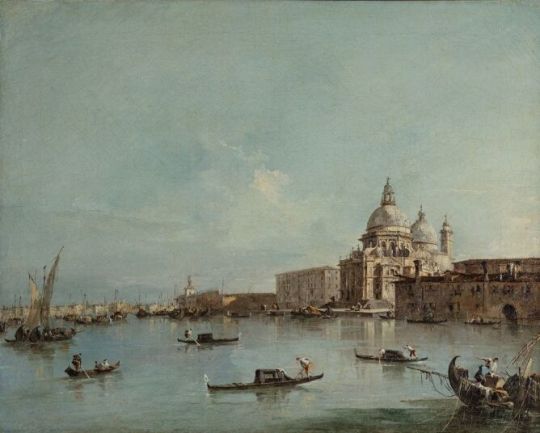
View of the Church of Santa Maria della Salute with the Dogana del Mare
Artist: Francesco Guardi (Italian, 1712-1793)
Date: c. 1770-1780
Medium: Oil on canvas
Collection: Norton Simon Museum, Pasadena, CA, United States
Description
Francesco Guardi specialized in painting picturesque views of Venice for European tourists. Depicted here is Santa Maria della Salute, the great domed church that dominates the mouth of the Grand Canal. Guardi characteristically emphasized not the specific Venetian monument, but his overall impression of the scene: the lively figures, the crisscross of boats in the canal and, above all, the effects of sunlight, water and open sky. This animated composition shows the loose, broken brushwork and delicate rendering of sparkling water and moist atmosphere that would later inspire the Impressionists.
Born and bred in Venice, recognition and financial security came to Guardi only as he approached middle age. Fame arrived posthumously and he is now recognized as one of Venice’s most poetic artists celebrated for his evocative views of his native city.
#painting#oil on canvas#venice#fine art#grand canal#santa maria della salute#domed church#italy#venetian monument#boats#figures#venetian architecture#europe#italian culture#oil painting#francesco guardi#italian painter#norton simon museum#italian art#artwork#european art#18th century painting
27 notes
·
View notes
Text

San Teodoro by Francesco Bognolo (x)
#venice#art#18th century#art history#photography#architecture#italy#sculpture#religious art#saint#apostle#museum#church#books & libraries#religious imagery#religion#christianity#catholicism#catholic art#catholic#roman catholic#light academia#dark academia#light
20 notes
·
View notes
Text
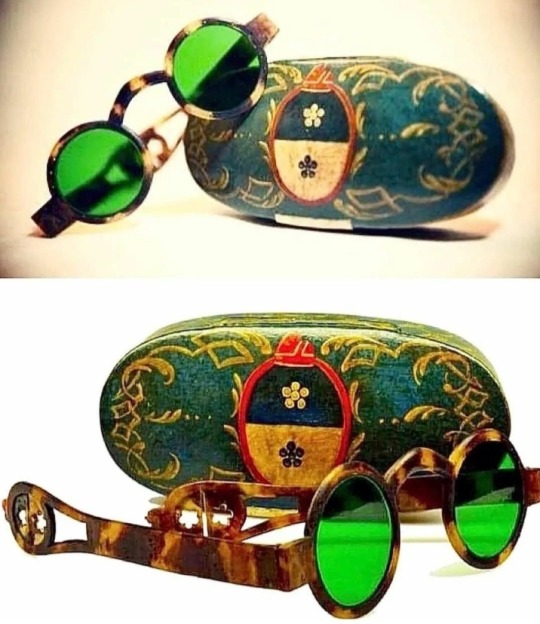
Sunglasses made of Murano glass, 18th-century AD, Venice, Italy.
Goldoni-type sunglasses with Mocenigo Coat of Arms.
Vascellari Collection (Italy) on display at The Murano Glass Museum.
—
Long before the rest of the world would discover the danger of ultra-violet rays in 1870, Venetian opticians were 120 years ahead of the curve.
The green colour of the lenses, conjured by the island's glassmakers in the bright hues of grass green, sea green and emerald green, wasn't simply a fashion statement but had a key functional role.
It has been later discovered that this colour serves as a powerful filter for UV rays, which are damaging to eye and skin health.
Thanks to Murano Glass, it became a true innovative jewel.
These emerald-colored sunglasses protected the eyes of the nobility and Commanders da Mar (of the sea) from the harmful glare of reflected light as they navigated the waters that surrounded them.
These sunglasses soon became widespread among Venetian high society.
One was almost certainly owned and used by Doge Alvise IV Giovanni Mocenigo (19 May 1701 - 31 December 1778), who was the leader of Venice from 1763 AD until his death on New Year's Eve, 31 December 1778 AD.
No one knows for sure why they were called "Goldoni" glasses, but it is assumed this was due to Carlo Goldoni (25 February 1707 – 6 February 1793), the famous Venetian playwright and librettist from the Republic of Venice.
#sunglasses#Murano glass#Mocenigo Coat of Arms#Venice#Italy#1700s#18th century#Vascellari Collection#The Murano Glass Museum#ultra-violet rays#UV rays#Venetian high society#Doge Alvise IV Giovanni Mocenigo#Carlo Goldoni#Goldoni glasses
28 notes
·
View notes
Text

Giandomenico Tiepolo
Punchinella's Departure, 1797
Ca' Rezzonico - Museum of the 18th century Venice
29 notes
·
View notes
Text

Venice: The Dogana and Santa Maria della Salute, workshop of Francesco Guardi, 18th century
Oil on wood 7 ⅛ x 12 ⅝ in. (18.1 x 32.1 cm) The Metropolitan Museum of Art, New York City, NY, USA
#art#painting#venice#italy#cityscape#francesco guardi#18th century#oil#the met#italian#venetian school
21 notes
·
View notes
Text
Why The Italian City of Lecce Is Nicknamed 'The Florence of The South'
Rich in honey-hued basilica's and elaborately decorated baroque cathedrals, the Southern Italian city of Lecce is often regarded as the 'Florence of the South'.
— By Angela Locatelli | October 5, 2024

The construction of Basilica di Santa Croce took over 140 years to complete, boasting a grand facade. Photograph By Francesco Lastrucci
It’s not easy to carry a basilica on your shoulders, but, despite the summer heat, these men aren’t breaking a sweat. Carved into the honey-hued exterior of the Basilica di Santa Croce, the stone figures kneel in a line from one side of the wall to the other, seemingly supporting the upper facade with their bare hands. Above them, the building is so richly decorated as to seem in motion: cherubs swirl in a spiral and garlands of pomegranate and acanthus leaves rise, reaching fever pitch where they all circle the central rose window. “Construction began in 1549,” says local guide Anita Maggiulli. “But it took over 140 years to complete.”
It seems to have been worth it, as the church has become the symbol of the city. I’m on a half-day tour of Lecce, the biggest urban centre of Salento, the tip of the heel to the Italian peninsula’s boot. It’s an area that distils what the wider region of Puglia is known for: white-washed hamlets, long stretches of sandy beach and the crystal-clear waters of the Ionian and Adriatic Seas. But this city in the hinterland has a different claim to fame — its grand, expertly carved architecture, which has earned it the moniker ‘Florence of the South’.


Baroque paintings frame the interior of Lecce Cathedral, located within the Piazza del Duomo (Left). In Lecce's city centre, many shops can be found selling local specialties (Right). Photographs By Francesco Lastrucci
According to Anita, while the nickname is often associated with German historian Ferdinand Gregorovius, it was first thought up by George Berkeley, an Irish bishop who travelled through Puglia in the 18th century. At a time when the Italian south was seen as unsafe and lawless, he reached the peripheries and found a city with protective walls, some 140 churches and, above all, magnificent facades. “He was left… disconcerted,” Anita says, mimicking a mix of surprise and confusion. “He described it as a place that had nothing to envy Rome or Venice, and even resembled a small Florence.”
If the Tuscan capital had been the cradle of the Renaissance, Lecce came to exemplify the Baroque era. The opulent art form originated in Rome in the 17th century, when the Vatican fought the threat of Protestantism the way it knew best — through an ostentatious display of power. As the style spread southward, it took on a local twist. “We couldn’t play with dimensions like the Romans, nor employ prestigious materials like the Neapolitans,” says Anita. “But we’d been blessed with a ‘poor’ material that allowed us to create marvels: Lecce stone.”

The former Hospital of the Holy Spirit is made out of Lecce stone. Photograph By Francesco Lastrucci
When it comes to this type of limestone, there are three key takeaways: it’s extracted in quarries around Lecce; it once formed the bed of an ancient sea, and to this day, you can find shells and fossils caked in its slabs; and it’s so malleable, it can be carved with a penknife. “It’s as soft as mollica,” says Anita, comparing it to the interior of a bread roll, as we move away from Santa Croce. “It became the defining characteristic of the Lecce Baroque.”
The city centre is almost entirely tinted in the stone’s characteristic warm, off-white shade. And while the Baroque approach was initially reserved for churches and mansions, large swathes of the city came to be rebuilt in its style. Locals wander around, unaffected by the open-air museum on display above their heads: the window lintels carved with scallop shells; the doorways flanked by Corinthian-style pillars; the balconies with stately balustrades.
Over the past 30 years, local artisans have started experimenting with a more modern approach to stonemasonry, too. One of the first was sculptor Renzo Buttazzo, now in his 60s, who greets me the next morning outside his home-turned-studio on the outskirts of San Cesario, a 10-minute drive from Lecce.
“Hot, eh?” he says in his garden by way of greeting, tugging at his grey linen shirt to fan himself. “I hold stonemasonry workshops here, to show visitors there’s more to Salento than sun and sea,” he tells me. “If you want to truly get to know the area, you must meet the people who built it up.”

Within his San Cesario workshop, sculptor Renzo Buttazzo experiments with modern stonemasonry techniques. Photograph By Angela Locatelli
Here, he builds, both figuratively and literally. At the far end of the garden, there’s a small exhibition space for his Lecce stone works. The ceiling is see-through; the daylight washes down on his sculptures, displayed on wooden pedestals all around the walls. There are sinuous figures with neither face nor features, and molecular-like forms that seem to contract and expand, with no angles or hard lines, no beginnings or ends. They’re a study in oxymorons: something solid that seems soft, something heavy that looks feather-light.
When describing his approach to working with Lecce stone, Renzo uses the word sconvolgere, an Italian verb for the act of shaking something out of its status quo. In the early 1990s, when artisans still used the material to sculpt angel-like putti and seraphim, Renzo was turning it into everyday objects, like clocks and lamps, before progressing to abstract sculpture. In 2001, he was honoured with the Order of Merit of the Republic, the Italian equivalent of being knighted.
“I take the old — the Baroque — to create the contemporary,” Renzo tells me as he flip-flops back outside in battered sandals, his soles chalk-white from the stone residue dusting the floor. “We local stonemasons come from a long legacy of excellence, and we have a duty to carry it forward. Our predecessors built something as magnificent as Santa Croce with their hands. Four centuries on, I work the same way.”
He reaches his workstation, a table on a covered patio surrounded by scattered tools, and turns his attention to a work in progress. He positions a wooden scalpel, then hits it with a hammer to sculpt sections from the undulating, hollow figure. A rasp is used to model its curves; sandpaper to shave its surface smooth. “Sometimes I’m here for 10 hours a day, and I come away exhausted,” he says, eyebrows furrowed, taking a step back to size up his efforts. “It’s not easy, you know — gifting people beauty.” And yet, as his face softens, pleased by the results, all I can think is how easy he makes it look.
2 notes
·
View notes
Text


Spice Container by Firm of Neresheimer, Hanau, Germany, late 19th to early 20th century

Spice Container, Bohemia, Moravia or Poland, late 18th-early 19th century

Spice Container, Berdichev (?), Russian Empire, 1810-20

Spice Container, Venice (Italy), 17th-18th century

Spice Container, Yemen or Palestine, late 19th-early 20th century

Spice Container, Poland, 1881

Spice Container, Poland or Russia, first half 19th century

Spice Container, Poland or Russian Empire, 19th century

Spice Container by L L or S S, Poland, first half 19th century

Spice Container, Poland or Russia, first half 19th century

Spice Container, Frankfurt am Main (?) (Germany), c. 1550, repairs and additions 1650/51
Some of my favorite spice containers from The Jewish Museum NY's website
3 notes
·
View notes
Text
Beautiful Venice

Who wouldn’t fall in love with beautiful Venice? This unique city sitting on its own lagoon where everything is connected by the canal system, is an amazing place; but it’s also a challenge.
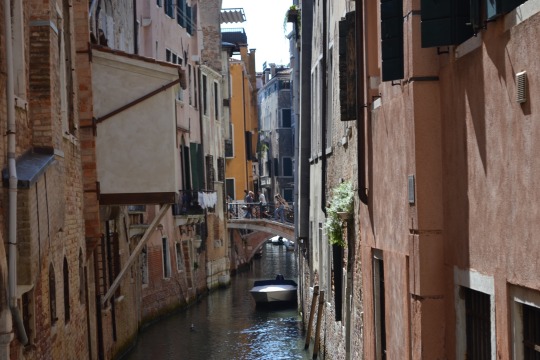
The maze of narrow streets, bridges and waterways combined with thousands of tourists and 30 degree heat made Venice an exhausting prospect. Luckily, we were staying just a 20 minute ferry ride away so it was very easy to get in and back out again.

We loved the history and the architecture - beautiful St Mark’s Square where a four piece band played to diners and those who had stopped for a coffee or a glass of wine. Doge’s Palace was incredible and we enjoyed the view from the Rialto Bridge along the canal as the gondolas manoeuvred through the busy waterway.


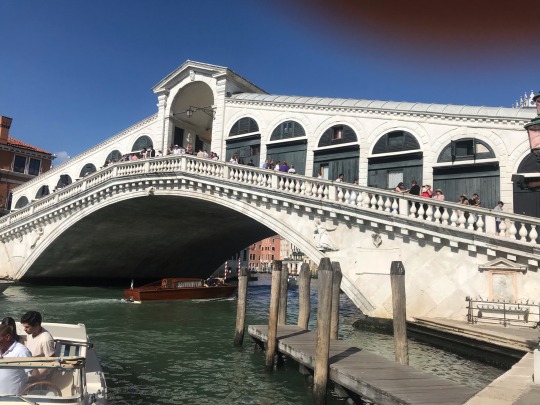
We also found the Bridge of Sighs - a famous Venice landmark - which connects the palace to the old prison cells.
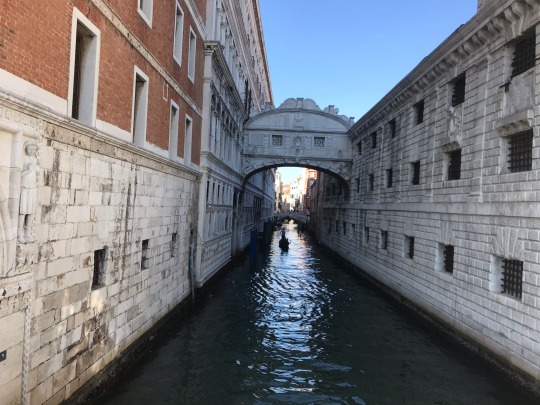
Searching for an escape from the crowds, we headed for the Ca’ Rezzonico, a Baroque palace on the Canal Grande now the home of a museum on 18th Century Venice. At the back of the museum there is a peaceful garden and a fountain where turtles and Coi Carp live. It was the perfect place to rest in the shade before the next round of sightseeing.

Obviously, the city has its fair share of designer shops and in the shopping centre tourists can book a free ticket to go onto the roof for a view of the city. Alex took the lift to the terrace - but unsurprisingly I stayed below!
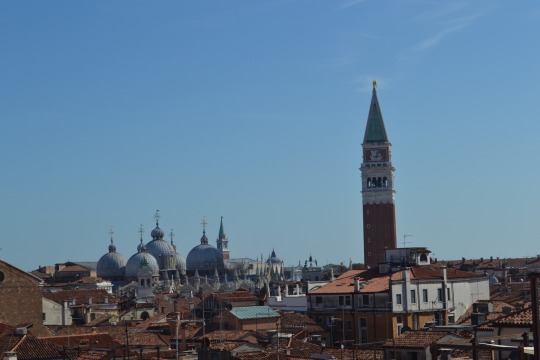
Our final stop was at The Basilica di Santa Maria Gloriosa dei Frari - the largest church in the city - which houses, among others, the tomb of the composer Monteverdi, a pioneer of Opera. So much history but we lost our way more than once, and had to catch a later ferry when we couldn’t find the terminal, as we tried to navigate this unusual city.
5 notes
·
View notes
Text
Alappuzha: The Venice of the East

Alappuzha (Alleppey), often called the "Venice of the East," is one of Kerala’s most beautiful destinations. With its mesmerizing backwaters, serene beaches, and rich cultural heritage, it attracts travelers from around the world.

Alappuzha Backwaters : The backwaters are the heart of Alappuzha. Cruising through the scenic Vembanad Lake on a traditional houseboat is a magical experience. Enjoy the lush green landscapes, coconut groves, and glimpses of village life along the waterway.
Alappuzha Beach : This beautiful beach is perfect for a relaxing evening. The 150-year-old pier extending into the sea and the historic lighthouse nearby add charm to the location. It's also a great spot for sunset lovers and adventure seekers.
3. Marari Beach : Located just a few kilometers from Alappuzha, Marari Beach is a tranquil escape. This less-crowded beach is ideal for those looking to unwind amidst the golden sands and swaying palm trees.

4. Kumarakom Bird Sanctuary : A paradise for birdwatchers, this sanctuary is home to a variety of migratory birds, including Siberian cranes, herons, and kingfishers. The best time to visit is during the winter months when the bird population is at its peak.

5. Pathiramanal Island : A small, picturesque island on Vembanad Lake, Pathiramanal is accessible by boat and is a haven for nature lovers. The island is rich in flora and fauna, making it a great spot for birdwatching and photography.

6. Krishnapuram Palace : This 18th-century palace built by Maharaja Marthanda Varma is a must-visit for history buffs. It houses the famous ‘Gajendra Moksham’ mural, one of the largest murals in Kerala, along with an archaeological museum showcasing artifacts from Kerala’s past.

7. Ambalappuzha Sree Krishna Temple : Known for its beautiful architecture and spiritual significance, this temple is dedicated to Lord Krishna. The temple’s famous ‘Palpayasam’ (sweet milk pudding) is a must-try delicacy.

8. Mannarasala Nagaraja Temple : This unique temple is dedicated to serpent gods and is set amidst a dense forest. The temple attracts devotees seeking blessings for prosperity and well-being.

9. Punnamada Lake : Famous for hosting the annual Nehru Trophy Boat Race, Punnamada Lake is a vibrant attraction. If you visit during the Onam festival, don’t miss the thrilling snake boat race that draws thousands of spectators.

10. Karumadi Kuttan : A historical site, Karumadi Kuttan is home to an ancient black granite Buddha statue believed to be from the 9th or 10th century. This lesser-known spot is worth visiting for its historical and spiritual significance.
Conclusion
Alappuzha is a blend of natural beauty, history, and culture. Whether you're exploring the backwaters, relaxing on pristine beaches, or delving into Kerala’s rich heritage, Alappuzha offers an unforgettable experience. So, pack your bags and get ready to discover the charm of this coastal paradise!
0 notes
Text
Favourite Museums
After a recent trip to Brussels I’ve been thinking of museums I’ve visited. My top five at the moment, in no particular order, are:
Ca’ Rezzonico, the Museum of 18th century Venice
Keats-Shelley House, Rome
Casa Fernando Pessoa, Lisbon
Acropolis Museum, Athens
Magritte Museum, Brussels
0 notes
Text

Meet Telma, the model who has been making waves in the fashion world with her striking presence and versatility. With a career that includes collaborations with major international brands, Telma has emerged as one of the most promising faces of the moment. Recently, she shone in the runway show for the renowned Atelier Hensley, bringing elegance and attitude to the catwalk. Now, Telma stars in the latest edition of META Magazine, once again showcasing her talent and ability to reinvent herself, solidifying her position as an icon of contemporary fashion.
1. WHAT DOES IT MEAN FOR YOU TO BE ON THE COVER OF THIS EDITION OF META MAGAZINE, AND HOW DOES IT REFLECT YOUR CURRENT CAREER MOMENT?
Tel: Being on the cover of this edition of META Magazine is a great honor for me. It reflects a very important moment in my modeling career, where I feel I’ve reached a higher level of professional and personal maturity. This achievement represents not only recognition for hard work and dedication, but also a platform to showcase my evolution and commitment to the fashion industry.
2. HOW DO YOU BALANCE YOUR MODELING CAREER WITH YOUR OTHER INTERESTS AND PASSIONS?
Tel: I’m very fortunate that this job allows me to enjoy my hobbies and gives me the opportunity to have a very flexible schedule. Plus, traveling is one of my passions, and it’s something I get to do a lot through my career, so I feel incredibly lucky to be able to combine both my work and personal interests.
3. WHAT WERE THE INSPIRATIONS BEHIND THE PHOTOSHOOT FOR THIS EDITION, AND HOW DID YOU BRING YOUR PERSONALITY INTO IT?
Tel: I’m a huge fan of fashion history, and whenever I visit a museum, I’m always drawn to those voluminous outfits. On my last trip to Venice, at the Galleria dell’Accademia, I came across a painting that left me in awe. It was of a woman from the 18th century dressed in a grand gown. Her gaze was so powerful that I felt like she could step out of the painting and speak to me at any moment. I shared my idea with my stylist, Tommé, and we immediately started working on bringing that vision to life.
4. YOU WERE ONE OF THE STARS OF THE HENSLEY COLLECTION’S DEBUT FASHION SHOW. TELL US HOW THAT EXPERIENCE WAS FOR YOU.
Tel: Working with the Hensley Atelier is always a great pleasure. I’ve been collaborating with them practically since the start of my career. In fact, my first runway was with them for the LaFeria collection, and since then, I’ve been part of every one of their shows. Each of them has been incredibly special, but this latest one, *Insurrection,* went beyond anything I’ve experienced before. Closing that show was a moment I’ll never forget, and I believe it marked a turning point in my career.
5. WHAT ARE YOUR UPCOMING PROJECTS, AND WHAT CAN YOUR FANS EXPECT FROM YOU IN THE FUTURE?
Tel: I’m part of the great Oproductions family, which is one of the most active agencies at the moment. Fortunately, with them, we have many future plans, including collaborations with major designers and fashion magazines. The next project coming up is the Dior Homme runway on September 28th. Although I’m not participating, I’ll be in the audience supporting this highly anticipated event.





0 notes
Text
Venetian Vistas: Navigating the Canals of Venice

Venice—a city like no other, where streets are made of water and time seems to stand still. As I arrived in this floating city, I was immediately captivated by its enchanting atmosphere. Venice is a place where every twist and turn reveals a new wonder, a city that begs to be explored at a leisurely pace. Here’s how I navigated the canals and immersed myself in the unique charm of Venice.
Day 1: The Grand Welcome
My journey began on the iconic Grand Canal, the city's main artery that snakes through its heart. There’s no better way to start your Venetian adventure than by hopping onto a vaporetto, the local waterbus, which offers a front-row seat to Venice’s architectural splendor. The sight of majestic palaces like Ca’ d’Oro and Ca’ Rezzonico rising from the water was nothing short of magical.
As I cruised down the canal, I couldn’t help but marvel at the intricate facades, each telling a story of Venice’s glorious past. The Rialto Bridge, one of the oldest and most famous bridges in the city, was a highlight. I spent some time wandering through the nearby market, where the vibrant colors and bustling energy perfectly captured the spirit of Venice.
Day 2: The Heart of Venice
On the second day, I ventured into the heart of Venice—Piazza San Marco, often referred to as the "drawing room of Europe." Standing in this vast square, surrounded by the grandeur of St. Mark's Basilica and the Doge’s Palace, I felt like I had stepped back in time. The basilica, with its Byzantine mosaics and gold accents, was a feast for the eyes. I took my time exploring the interior, soaking in the history and artistry that adorn every corner.
Next, I wandered through the Doge’s Palace, once the political and judicial hub of Venice. Walking across the Bridge of Sighs, I could almost hear the whispers of history—this was where prisoners caught their last glimpse of freedom before facing their fate.
The evening was reserved for a gondola ride through the quieter canals. There’s something undeniably romantic about gliding through the narrow waterways, with only the gentle sound of the oar breaking the water's surface. As the sun set, casting a golden glow over the city, Venice revealed its most enchanting side.
Day 3: Island Hopping
No visit to Venice is complete without exploring its surrounding islands. I set out early for Murano, famous for its glassmaking tradition. Watching the artisans at work was a mesmerizing experience, as they transformed molten glass into delicate, intricate pieces of art. The island itself is a peaceful retreat, with its colorful houses and quiet canals offering a serene escape from the hustle and bustle of Venice.
Next on my list was Burano, an island known for its lace-making and vibrant, candy-colored homes. Walking through its streets felt like stepping into a painting—each house a different hue, reflected perfectly in the still waters of the canals. The island's charm is irresistible, and I found myself lingering longer than planned, savoring every moment in this picture-perfect setting.
Day 4: The Art of Getting Lost
On my final day in Venice, I decided to embrace the city’s labyrinthine layout and simply get lost. Venice is a city best explored without a plan—every narrow alley and hidden square holds a surprise. I stumbled upon quaint cafes where locals sipped their espresso, art galleries tucked away in quiet corners, and small bridges offering stunning views over the canals.
One of the highlights was discovering the quiet district of Dorsoduro, home to the Peggy Guggenheim Collection. This museum, housed in an 18th-century palazzo, features an impressive collection of modern art. It was a peaceful refuge, offering a different perspective on Venice's rich cultural heritage.
As I meandered back toward the Grand Canal, I realized that Venice is a city that leaves a lasting impression. Its beauty is timeless, its charm irresistible. Every corner of Venice whispers tales of a bygone era, yet it remains very much alive, a living museum that continues to captivate travelers from around the world.
Traveling with Ease
Navigating Venice can be overwhelming, but having the right travel agency made all the difference. Roomchai Limited, with its expertise in European tours, ensured that my Venetian adventure was smooth and enjoyable. From booking the perfect accommodations to organizing my island-hopping excursions, Roomchai took care of all the details, allowing me to fully immerse myself in the beauty of Venice.
While other agencies in Bangladesh, such as Obokash and ShareTrip, also offer European packages, my experience with Roomchai was exceptional. Their personalized service and attention to detail made my trip unforgettable. If you're planning a visit to Venice, Roomchai Limited is an excellent choice to ensure your journey through the canals is as enchanting as the city itself.
As I boarded my flight home, I carried with me memories of a city that felt like a dream—a city where the past and present blend seamlessly, where every canal, bridge, and piazza tells a story. Venice, the City of Canals, will forever hold a special place in my heart.
0 notes
Text
Explore Alappuzha Tourist Places: Unveiling Kerala’s Best-Kept Secrets
Alappuzha, often referred to as the "Venice of the East," is a mesmerizing town nestled in the heart of Kerala. Famous for its intricate network of backwaters, golden beaches, and cultural richness, Alappuzha is a paradise for those seeking a blend of natural beauty and heritage. Whether you’re a nature enthusiast, a history buff, or simply looking for a serene escape, the top Alappuzha tourist places offer something for everyone.
Alappuzha Backwaters: A Tranquil Retreat
The backwaters of Alappuzha are the crown jewel of this enchanting town. These serene waterways, surrounded by lush greenery and dotted with traditional houseboats, provide a unique and peaceful way to explore the region. A houseboat cruise is a must-do activity, allowing you to float gently along the canals while taking in the picturesque landscape. As you glide through the water, you'll encounter charming villages, vibrant paddy fields, and an array of wildlife that make the backwaters an unforgettable experience.

Krishnapuram Palace: A Peek into History
One of the most significant Alappuzha tourist places is the Krishnapuram Palace, a historical gem that showcases Kerala's rich cultural heritage. Built in the 18th century by the Travancore king Marthanda Varma, the palace is renowned for its exquisite architecture and the famous Gajendra Moksha mural, one of the largest single-panel murals in Kerala. The palace also houses a museum displaying antique sculptures, paintings, and inscriptions, offering a deep dive into the region's history.
Alappuzha Beach: Where History Meets Serenity
Alappuzha Beach is another highlight that you simply cannot miss. This stunning beach is known for its tranquil atmosphere and breathtaking sunsets. The historic Alappuzha Lighthouse, which dates back to 1862, adds a touch of nostalgia to the setting. Walking along the sandy shore, you’ll find a mix of local fishermen and tourists enjoying the natural beauty. The beach also features a pier extending into the sea, perfect for a leisurely stroll while soaking in the panoramic views.
Pathiramanal Island: A Sanctuary for Bird Lovers
Pathiramanal Island is a hidden treasure among Alappuzha tourist places. Located in Vembanad Lake, this small, lush island is a paradise for bird watchers. The island serves as a temporary home for numerous migratory birds, including egrets, herons, and kingfishers. A boat ride to the island offers not only a peaceful retreat but also a chance to witness the diverse avian population in their natural habitat.

Mullakkal Rajarajeswari Temple: Spiritual Serenity
For those interested in the spiritual and cultural aspects of Alappuzha, the Mullakkal Rajarajeswari Temple is a must-visit. This temple, dedicated to the goddess Rajarajeswari, is a beautiful example of traditional Kerala architecture. The temple is known for its serene atmosphere and the vibrant annual Mullakkal Chirappu festival, which attracts thousands of devotees from across the state. The temple's peaceful environment provides a perfect opportunity for meditation and reflection.
Plan Your Alappuzha Adventure with MyCozyTrip
Alappuzha is a destination that promises a rich tapestry of experiences, from tranquil backwater cruises to exploring ancient palaces and temples. Each of the Alappuzha tourist places offers a unique glimpse into the natural beauty and cultural heritage of Kerala. Let MyCozyTrip help you craft the perfect itinerary to explore these hidden gems. Contact us at [email protected] or call 9205692673 to begin your journey through the enchanting landscapes of Alappuzha.
For more details on the top attractions and to book your trip, visit our Alappuzha Beach page and discover why Alappuzha is a must-visit destination in Kerala.
0 notes
Text

Giandomenico Tiepolo
The villa walk, 1791
Ca’ Rezzonico - Museum of the 18th century Venice
6 notes
·
View notes